- Joined
- Sep 13, 2018
- Messages
- 360
- Reaction score
- 333
People in the hobby often repeat what they hear others say-
- “Glass lids Are bad. They get dirty and block a lot of light”
- “Clean glass drops PAR 10-20%. On top of that, the dirt, salt creep and humidity drops cut par an another 10-15% so you have to increase your lights every week to account for this then back to baseline when tops are cleaned”
I’ve been using glass lids for 17 years and strongly feel their benefits far outweigh the par loss most modern lighting is able to overcome.
I did a little 1 hour real world experiment using 3 new Neptune sky lights mounted over a 72”x18”x27” 150 gallon reef with admittedly yellow foggy water(I don’t use any filtration whatsoever). The bottom of the light is 3.0” above the glass, 5.0” above the water surface and 16.5” above the par sensor(11.5” under water). The par is measured with the neptune PMK(apogee sensor). The glass is a mix of what fits. Measurements were taken under the center 3.9mm thick piece of very scratched up tempered green glass. My current lighting is set to Neptune’s custom “sky” color recipe at 66% intensity. Readings were viewed without lag using the display module. All pumps were left running as usual and the average was taken after 5 minutes. My wav pumps are on 5 second alternating pulse so flow anomalies weren’t a factor.
SKY 66% - PAR - % of Max
Dirty glass - 227 - 89.0%
Clean glass - 232 - 91.0%
No glass - 255 - 100%
Sky 100%. - PAR - % of MAX
Clean glass - 330 - 89.2%
No glass - 370 - 100%
All ch 100% - PAR - % of MAX
Clean glass - 368 - 89.8%
No glass - 410 - 100%
In conclusion, clean glass cuts PAR by 10%(on average) vs no lid at all. Dirt buildup reduces PAR an additional 2%. Using my 66% sky setting as an example- if I wanted to emulate the par with no lid I just have to bump up intensity 7% to 73%. Glass lids work.
I believe this squashes the misconceptions surrounding PAR reduction however it does not address the potential shift in color spectrum. I’ll leave that up to someone who really wants to nit pick lass works for me. In another, much more thorough experiment I will address the pH “boosting”, topoff reducing and electric(heat) saving benefits of glass lids.
Image description
1- shows the amount of dirt allowed to accumulate on lids over 6 weeks
2- shows the general hazyness to the water. And wild coral growth provided glass lids don’t hold you back
3- par sensor location
4- shows the basicness of the setup. Random glass lids, hastily made light rack resting on two stacks of buckets- real world testing.
5- This is the center glass that readings were taken under. This is it CLEAN. Very hazy, scratched, hard water deposits
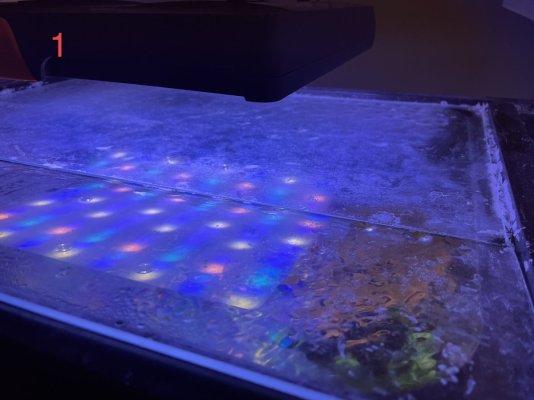
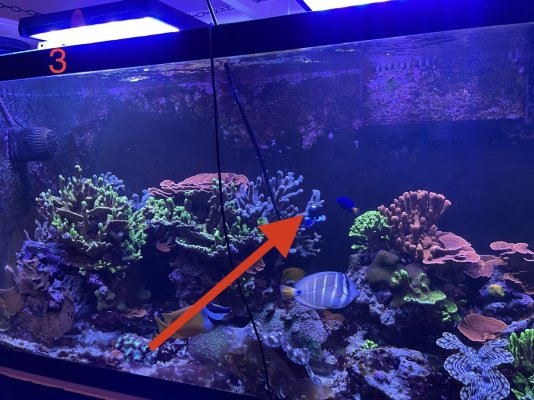
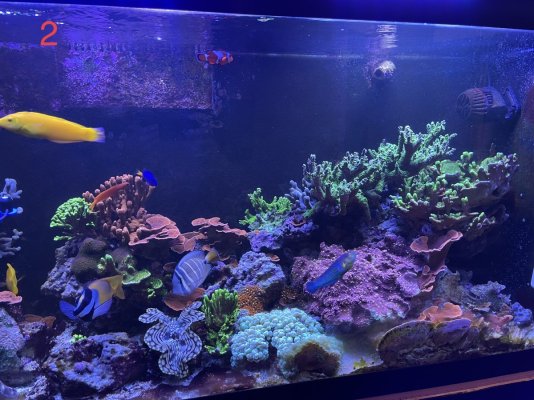
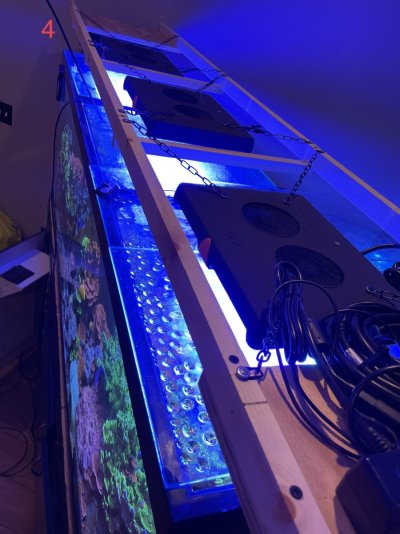
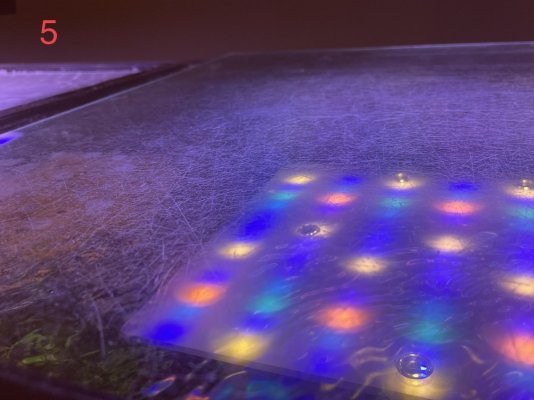
- “Glass lids Are bad. They get dirty and block a lot of light”
- “Clean glass drops PAR 10-20%. On top of that, the dirt, salt creep and humidity drops cut par an another 10-15% so you have to increase your lights every week to account for this then back to baseline when tops are cleaned”
I’ve been using glass lids for 17 years and strongly feel their benefits far outweigh the par loss most modern lighting is able to overcome.
- They prevent fish from jumping
- They limit evaporation reducing your need for topoff water- expanding the duration your ato reservoir lasts.
- They limit humidity being added to your household air
- They limit evaporative heat loss allowing you to use much smaller heaters(risk mitigation) and save a significant amount of electricity($$$)
- They protect your expensive lights from rogue fish splashing
- Most importantly- they limit the effect that high CO2 household air has on your pH. Reducing gas exchange reduces carbonic acid addition to your reef.
I did a little 1 hour real world experiment using 3 new Neptune sky lights mounted over a 72”x18”x27” 150 gallon reef with admittedly yellow foggy water(I don’t use any filtration whatsoever). The bottom of the light is 3.0” above the glass, 5.0” above the water surface and 16.5” above the par sensor(11.5” under water). The par is measured with the neptune PMK(apogee sensor). The glass is a mix of what fits. Measurements were taken under the center 3.9mm thick piece of very scratched up tempered green glass. My current lighting is set to Neptune’s custom “sky” color recipe at 66% intensity. Readings were viewed without lag using the display module. All pumps were left running as usual and the average was taken after 5 minutes. My wav pumps are on 5 second alternating pulse so flow anomalies weren’t a factor.
SKY 66% - PAR - % of Max
Dirty glass - 227 - 89.0%
Clean glass - 232 - 91.0%
No glass - 255 - 100%
Sky 100%. - PAR - % of MAX
Clean glass - 330 - 89.2%
No glass - 370 - 100%
All ch 100% - PAR - % of MAX
Clean glass - 368 - 89.8%
No glass - 410 - 100%
In conclusion, clean glass cuts PAR by 10%(on average) vs no lid at all. Dirt buildup reduces PAR an additional 2%. Using my 66% sky setting as an example- if I wanted to emulate the par with no lid I just have to bump up intensity 7% to 73%. Glass lids work.
I believe this squashes the misconceptions surrounding PAR reduction however it does not address the potential shift in color spectrum. I’ll leave that up to someone who really wants to nit pick lass works for me. In another, much more thorough experiment I will address the pH “boosting”, topoff reducing and electric(heat) saving benefits of glass lids.
Image description
1- shows the amount of dirt allowed to accumulate on lids over 6 weeks
2- shows the general hazyness to the water. And wild coral growth provided glass lids don’t hold you back
3- par sensor location
4- shows the basicness of the setup. Random glass lids, hastily made light rack resting on two stacks of buckets- real world testing.
5- This is the center glass that readings were taken under. This is it CLEAN. Very hazy, scratched, hard water deposits






















